Earlier
this week I went through the top receiving prospects in this year’s draft. Now
it’s time to take a look at the players who are going to have to cover them. It
isn’t a particularly strong year for cornerbacks (it isn’t a particularly
strong year outside the defensive line in general), but there are a few options
with the upside to become real stars down the line.
Greedy
Williams, LSU
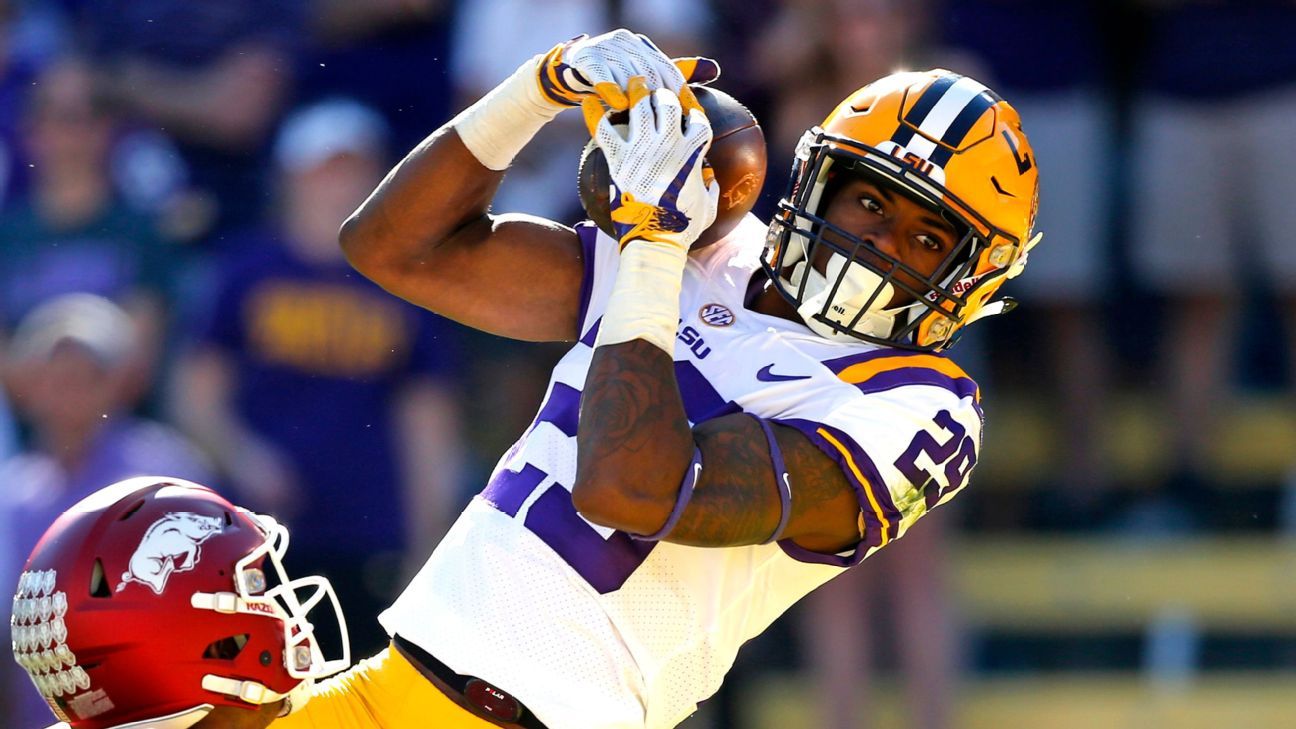
It’s
rare to find a cornerback with Williams’s physical tools, and it’s even rarer
to find one who puts those tools to use as effectively playing the ball as he
does. When the ball is in the air, he treats it as if he is just another
receiver, using his explosive speed and long arms to break up and intercept
passes. He had eight interceptions in two years of college football, and he
isn’t going to slow down at all in the NFL.
Williams
impressed in the only drill he did at the Combine, putting up 4.37 in the forty
to back up the speed he shows on tape. He has experience in a number of
different schemes, but he is at his best playing tight to the line of
scrimmage. He doesn’t get particularly physical with receivers, but he does a
good job mirroring them off the snap, and once he opens his hips he is able to
run with anyone put across from him. On deep routes he consistently gets his
head around to find the football, and he squeezes against the sideline to give
even smaller windows for completion over his long arms.
Williams
isn’t a perfect prospect by any means. His change of direction is lacking, and
that isn’t going to improve much in the NFL. He can be beaten badly by quick
stop routes, as he is unable to slam on the brakes as well as the receivers he
faces. He can be beaten across his face by slant routes and other quick passes,
but this could potentially be fixed by technique. These small qualms aside, he
is easily the best cornerback prospect in this class, and well worth a top ten
selection.
Byron
Murphy, Washington
/cdn.vox-cdn.com/uploads/chorus_image/image/62765778/download.0.jpg)
A
disappointing Combine performance knocks Murphy down in my eyes, likely to the
second half of the first round. Less than six feet tall, he ran a miserable
4.55 forty yard dash, and didn’t do much better in any of the other drills he
participated in. He will struggle against the elite athletes he is going to
face in the NFL, and he may be best in a role that shields him from too much
responsibility against bigger or faster targets. Which is too bad, because in
terms of pure coverage—matching a receiver step-for-step and break-for-break—he
is the most impressive cornerback in this class.
Murphy
spent a lot of time drifting around in a deep zone at Washington, but when he
was asked to man up against an opposing receiver he was usually up to the
challenge. He isn’t particularly physical, and he can get in trouble when he
tries to engage opposing receivers this way. He’s much better dropping off from
the line where he can watch and mirror every step they take, always
perfectly balanced as he either breaks downhill to make a play on the ball or
rides downfield in the receiver’s hip pocket.
Murphy’s
game is polished in a lot of ways, and he’d be an excellent selection for a
team looking to shore up their secondary immediately. He understands how to
play around opposing receivers to knock down the ball, and his ability to play
without being overly physical will ease his transition to the NFL. He might top
out as a good number two cornerback, but it won’t take him long to reach that
level, and he should be fine as long as he doesn’t spend too much time matched
up against the true freaks of the league.
Trayvon
Mullen, Clemson

Like
Williams, Mullen is at his best when he starts lined up directly across the
line of scrimmage from the opposing wide receiver. Unlike Williams, Mullen wins
with his physicality rather than his speed. He doesn’t stack up receivers to
prevent them from getting down the field, but he has a strong initial
punch that disrupts their release and ruins the timing of their routes. From
there he is smoothly able to transition to turn and run with receivers, with
both now starting from equal footing.
Things
can get a little dicey when they don’t work out exactly as I describe. If he’s
asked to play off the line rather than up tight against it, Mullen has a habit
of sitting flat footed and trying to catch the opposing receiver on his route.
He is way too physical down the field, and this will present problems as he
translates to the stricter rules of the NFL. His ball skills aren’t great, and
despite good height and long arms he will likely lose more than his share of
contested catches.
With
some work I could see Mullen developing into an above average NFL starter. He
has decent change of direction, able to come downhill aggressively to handle
underneath routes. He needs to get better at recovering when his initial check
fails, and at keeping his balance alongside receivers as they run together down
the field. Most of this comes down to footwork and repetition, and with good
coaches he can clean up some of the holes in his game. The talent is there as a
late first round pick, but it will probably take a couple years for it to truly
show up.
Chauncey
Gardner-Johnson, Florida
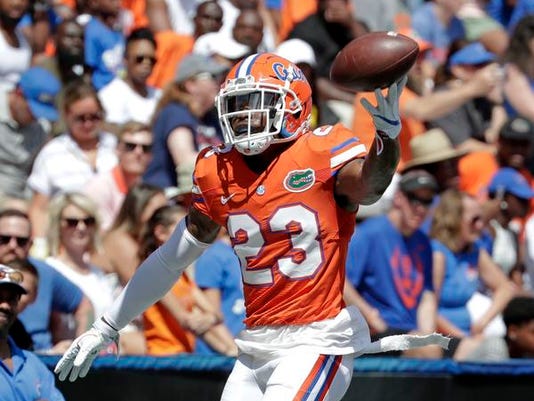
Most
sources have Gardner-Johnson listed as a safety, and that may ultimately be
where he ends up in the NFL. But in my mind playing safety is just a good
fallback option in case he doesn’t work out at his most valuable position,
which is the position he played in college. At Florida Gardner-Johnson was a
dynamic playmaker as a slot cornerback, and I think he should have an
opportunity to develop there in the NFL as well.
If
he does stick at cornerback, Gardner-Johnson will instantly be one of the most
physical cornerbacks in the league. He is an excellent tackler in space, and he
is a nightmare as a blitzer coming out of the slot. Properly used he can
probably put up four or five sacks each year based solely on the timing and
ferocity of his blitzes. He could probably be a little better at playing
through blockers rather than trying to run around them, but even as he is now
he will be a force against the run and the quick passing game.
The
issue with Gardner-Johnson is coverage. He isn’t a spectacular athlete, and he
can be beaten on quick breaking routes of the sort he’ll have to face regularly
in the slot. He can win with physicality, but that is also difficult in the
middle of the field. He makes up for some of these shortcomings with good ball
skills that allow him to make big plays, but it will be a rough transition
trying to keep up with NFL receivers.
So
how valuable is a cornerback who still needs to learn how to cover? That’s a good question,
and it’s one the team that drafts Gardner-Johnson will have to answer. But the
truth is, he doesn’t need to be a lockdown coverage man to be an impact player
on a defense. The potential to fill a unique role is intriguing, and the backup
option as a more traditional safety is enough that I would take a flyer on him
at the end of the first round.
DeAndre
Baker, Gerogia

There
isn’t a lot of upside to be found with Baker. He isn’t particularly big, or
particularly athletic. He plays aggressive against underneath routes, but he
doesn’t have the burst or the ball skills to consistently produce interceptions
and pass breakups. He doesn’t get physical against opposing wide receivers, and
he loses more often than he wins at the catch point. In short, there is no
reason at all to even consider taking him in the first round.
That
doesn’t mean he’s a bad player. He does a lot of little things well that will
transition to the NFL. He’s a smart player who does a good job reading the play
as it develops ahead of him, not flipping his hips open until the last possible
moment to avoid giving away easy throws underneath. He communicates well in
zone coverage and usually gets deep enough to prevent anyone from getting
behind him. He is very good at squeezing receivers against the sideline on
vertical routes, making up somewhat for his questionable speed by cutting
receivers off so they can’t simply run past him.
Baker
will top out as a functional number two cornerback in the NFL. It won’t happen
right away, as he will need time to get up to speed reading the more complex
route runners at the professional level. I have no doubt he will pick this up
eventually though, and he’s the sort of player who could have a long and
unremarkable NFL career. There’s just no reason to expect it to be anything
more than that.
Rock
Ya-Sin, Temple

I
really want Ya-Sin to be good, and not just because Rock Ya-Sin will instantly
become a Hall of Fame caliber NFL name. He has a fun style that I wish I saw
from more cornerbacks, aggressive against both the run and the pass. He sticks
his nose into congested areas, he jumps underneath routes for interceptions,
and he carries himself with an attitude that’s just infectious and fun.
And
I don’t think it’s outside the realm of possibility that he becomes a high
caliber NFL cornerback. If you put together all his best moments, he is right
up there with the top cornerbacks in this class. He can make great breaks on
the ball. He can disrupt receivers with physicality as they run down the field.
He can play with excellent balance that allows him to be aggressive and still
recover to shut down a throwing lane.
But
the most important word in each of those sentences was “can”. There is a lot
that Ya-Sin can do, but he is maddeningly inconsistent on just about every
play. Sometimes he makes great plays on the ball, other times he fails to get
his head around and gets too physical with the opposing receiver. Sometimes he
makes great breaks on the ball, other times he sits back on his heels and
allows easy catches in front of him. He seems to consistently run into trouble
whenever he flips his hips, which makes sense seeing his Combine performance,
where he was in the bottom 15 percent of cornerbacks in both agility drills.
He’s at his best when he stays square with the opposing receiver, but he
doesn’t have the long speed to play this way against most NFL deep threats.
The
trickiest part of scouting is always trying to differentiate what a player is
from what he will become. I prefer to look for traits and hope that a player
can develop in the NFL, betting on upside. And if that was the only concern,
Ya-Sin’s upside is probably second or third among this cornerback class. But
while a player can iron out a few inconsistencies in the NFL, it’s hard for me
to believe that Ya-Sin can erase every single issue he has. More likely than
not he’ll take care of a few while the others remain in his game, leaving a
capable, fun, and maddening player for whoever ends up drafting him.
Julian
Love, Notre Dame

The
story on Love is more about the things he can’t do. He doesn’t have the long
speed to turn and run with receivers down the sideline, and he doesn’t do a
very good job getting his head around to play the ball when he’s running down
the sideline. Physicality is not a part of his game at all, and when he does
try to press an opposing wide receiver he has a habit of getting overextended
and off balance, leaving him in poor position to recover down the field.
I
don’t see these limitations going away at the next level. He is who he is, and
who he is will not be useful in a number of NFL schemes. But that isn’t to say
he’s not without his strengths. He covers ground well when he makes a decision
and breaks downhill. He can be outmuscled some at the point of the catch, but
he does a good job playing around receivers to knock the ball out of the air.
I
think Love will fit best into a scheme that runs more zone coverage. Help over
the top will help keep him from getting burned, and the opportunity to sit
back, diagnose the play, and break downhill will free him to play to his
strengths. His performance in the agility tests at the Combine is a little
intriguing, and I think if he can work on his technique to shore up some of his
balance issues he might be more flexible scheme-wise than I’m giving him credit
for. He’s worth a second round pick for sure, for someone whose system fits his
talents.


/cdn.vox-cdn.com/uploads/chorus_image/image/57819997/usa_today_10399003.0.jpg)

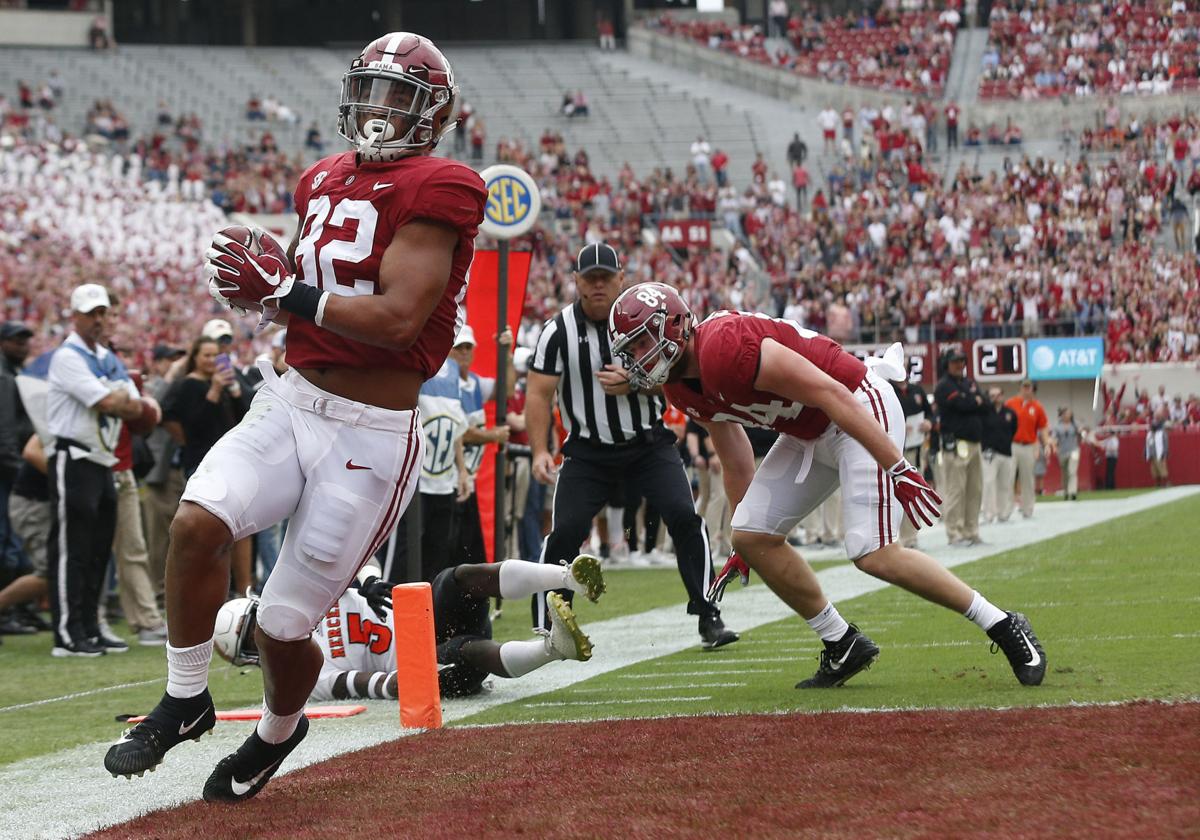
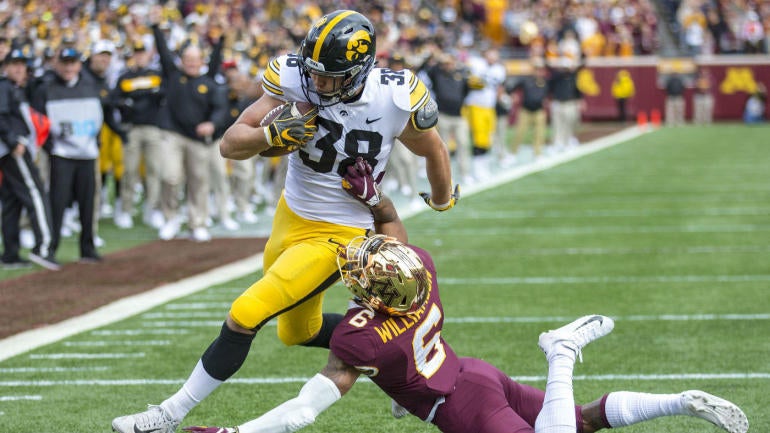

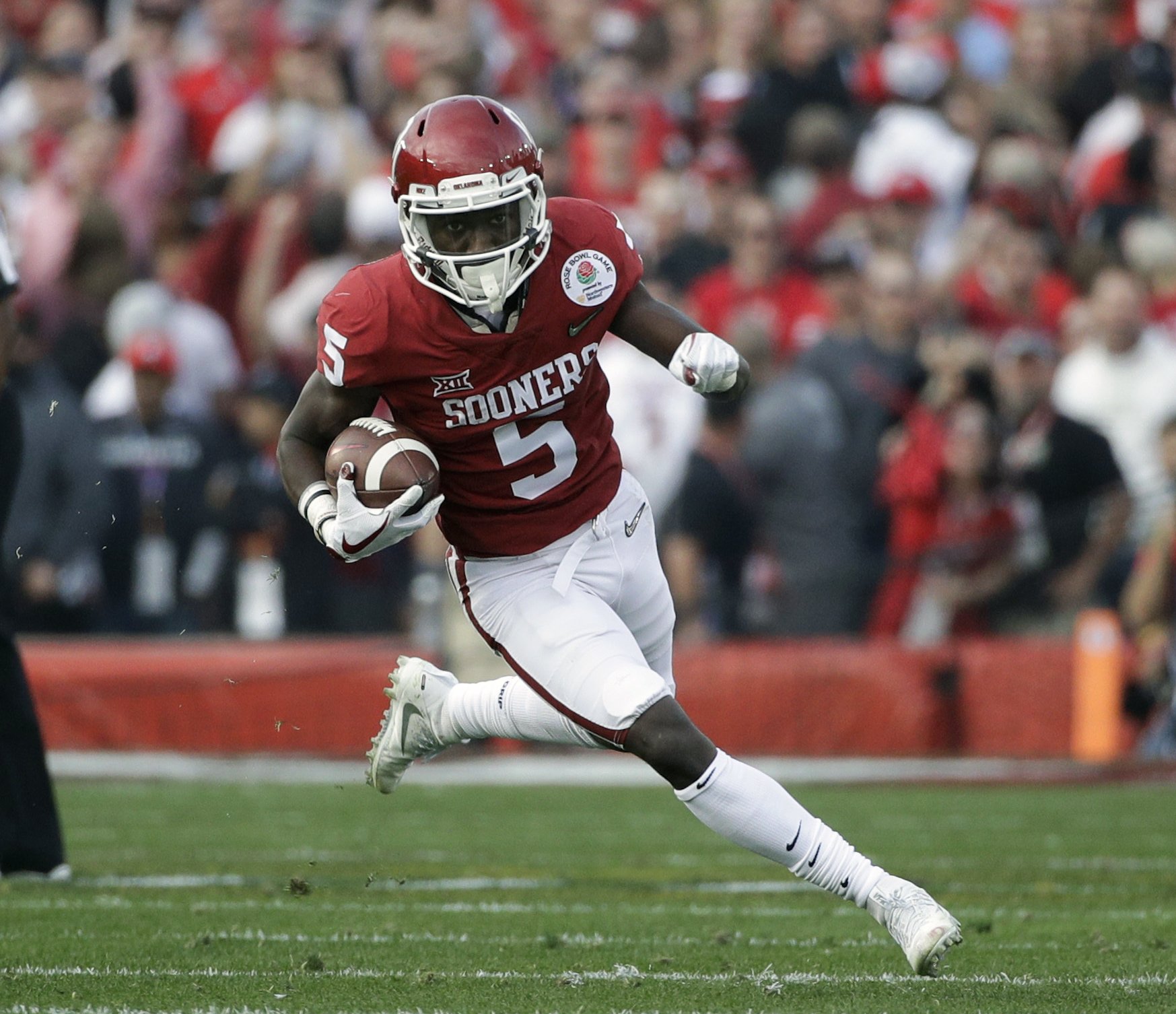
/cdn.vox-cdn.com/uploads/chorus_image/image/62857700/usa_today_11769242.0.jpg)
/cdn.vox-cdn.com/uploads/chorus_image/image/61104433/1025652222.jpg.0.jpg)
/cdn.vox-cdn.com/uploads/chorus_image/image/62606542/870209570.jpg.0.jpg)